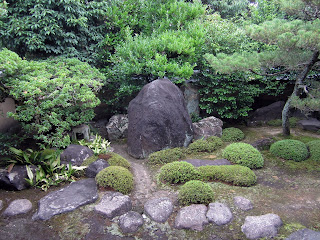Bishamon-do is not well-known to foreign visitors. But it's located just one station away from JR Kyoto station.
In Autumn, the maple leaves show a beautiful scenery to the visitors.
Bishamon-do is dedicated to Bishamon-ten It is also called Tamon-ten, when it is set as one of the four guardian Deities protecting in each direction.
So when it is Tamon-ten, it plays a role as a guardian and when Bishamon-ten, it is a deity of the wealth.
And it is said that it was too rich, and the money was too much to spend, So Bishamon-ten burned the money. One day, Bishamon-ten decided to give to people to save them( according to the monk.)
That's why Bishamon-ten is called a deity of the wealth.
This is also one of the five monseki-jiins, where a member of Imperial family or of high ranked court nobles became a monk
So the main hall used to be a residence of Emperor Kosei and was moved to here.
Another must-see things here are tricky pictures When you walk in a room there, you will find many pictures depicted on the sliding doors.
At first, the dragon on the ceiling welcomes you. Please keep your eyes on the eyes of the dragon and walk slowly, and the eyes will follow you.
Then the next room, in the pictures, two men were sitting at the table. Please walk slowly from one corner to the other keeping your eyes on the table, and the length of the table will change.
In the other room, the carp in the wooden screen watches you. Please walk slowly with your eyes kept on the eyes of the carp, and the eyes will follow you too.
The garden welcomes you quietly.
The lucky charms with a centipede is available here. Centipede is said to be a messenger of Bishamon-ten. If you attach the cham above a door or an entrance of your house, money or wealth may come.
Many maple trees wait for your visit.
admission : 500 yen
location
the nearest station JR Yamashina
Yamashina ( subway Tozai line )


















































